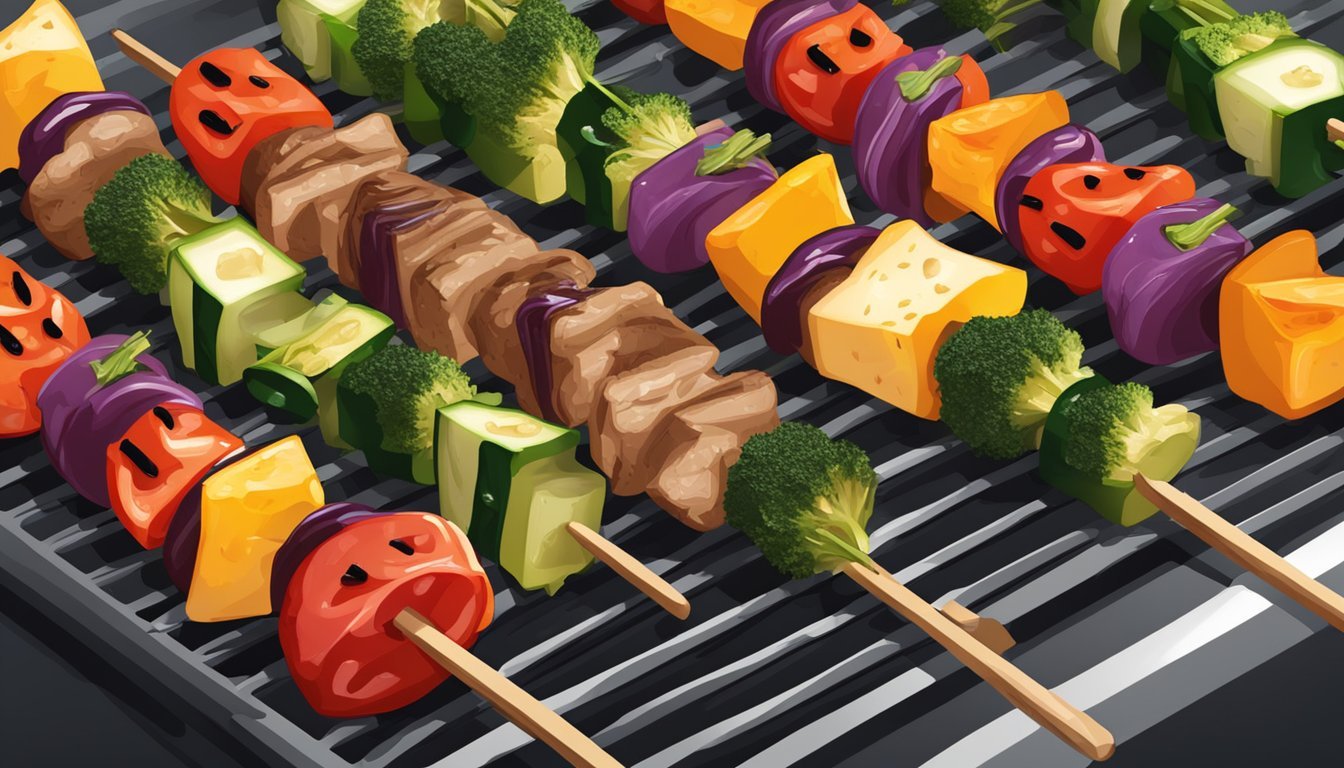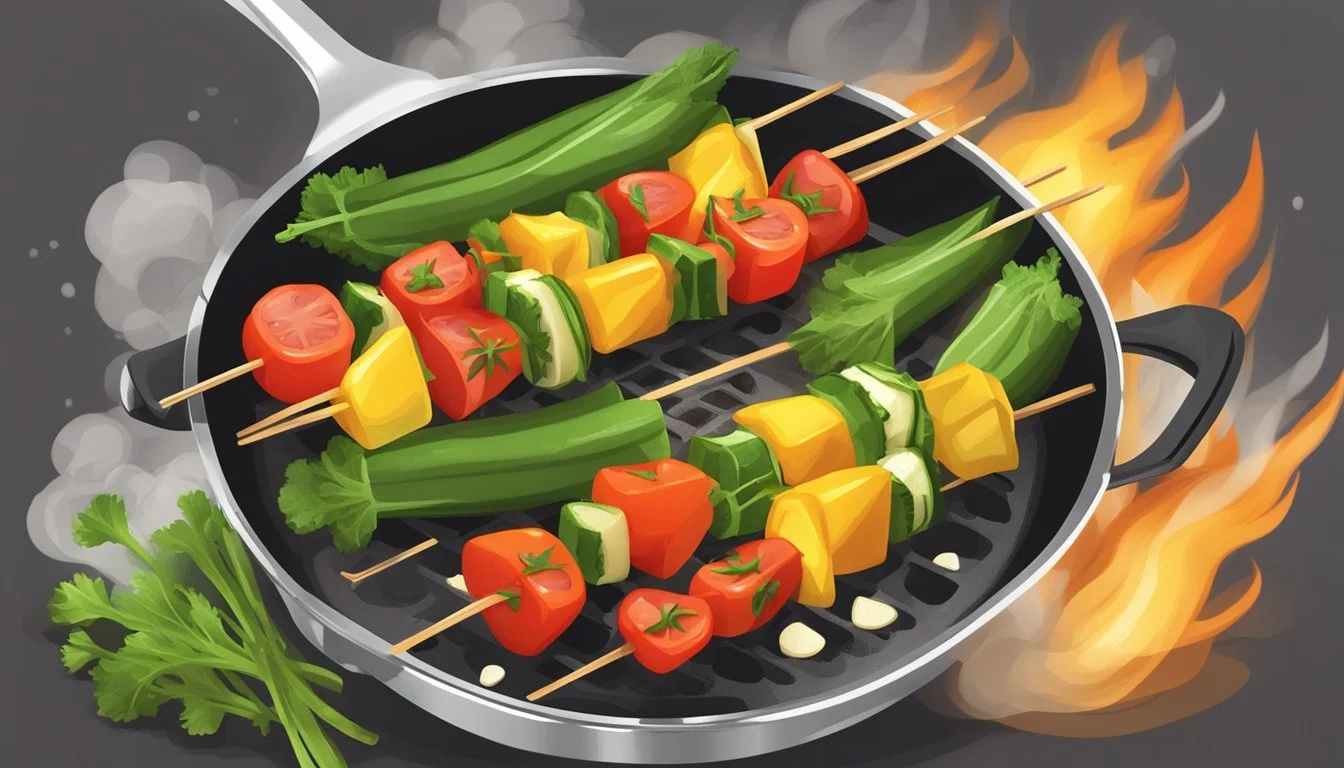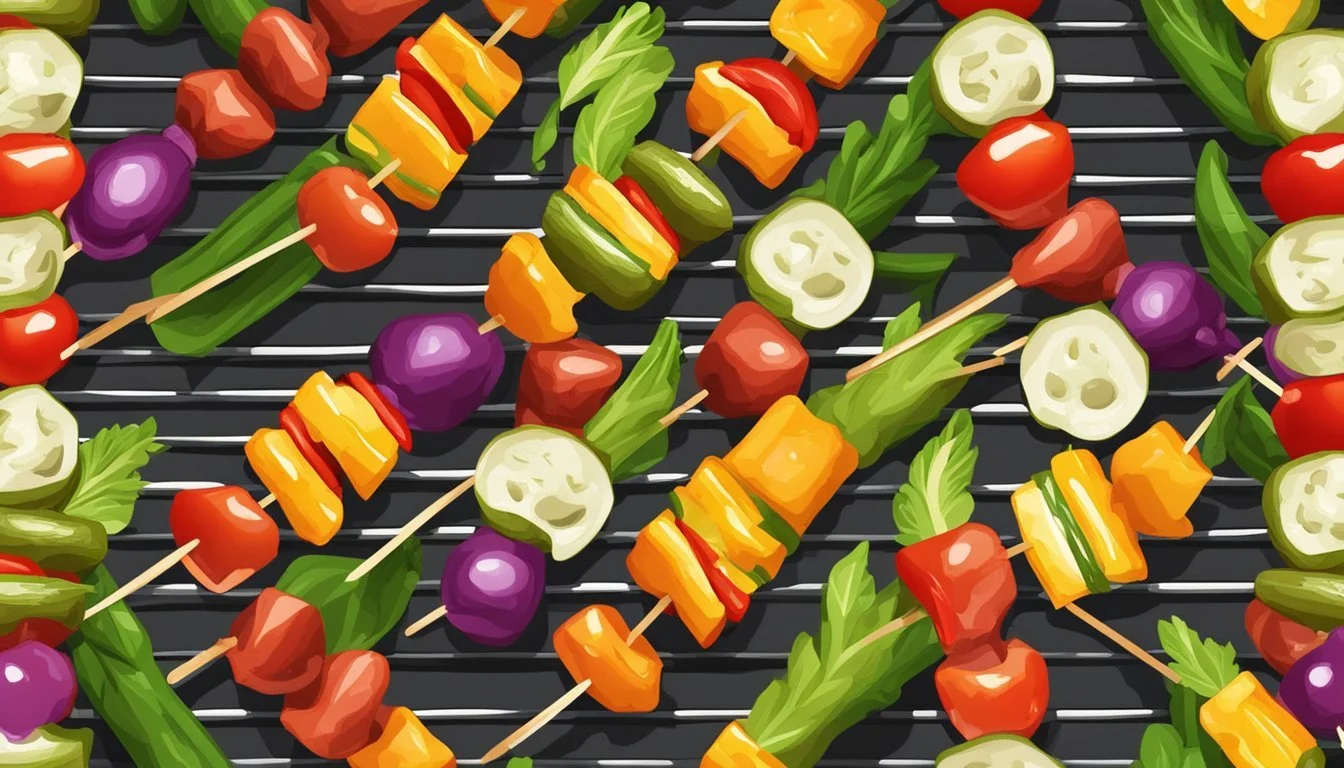Best Way to Reheat Vegetable Kabobs
Techniques for Retaining Smoky Flavor
Reheating vegetable kabobs can be a delicate task as the goal is to maintain their smoky flavor and avoid a soggy or dry texture. While the kabobs might have been perfect when they first came off the grill, preserving their quality requires careful technique. Understanding how to properly reheat them is essential for recapturing the essence of a freshly cooked meal, ensuring that the vegetables remain vibrant and flavorful.
The key to successfully reheating kabobs lies in choosing the right method and paying attention to the details. An oven's even heating capabilities make it a prime choice for warming up these skewered delights. However, using a skillet can also yield excellent results when done correctly. The process should be gentle enough to warm the kabobs through without cooking them further.
Selecting the appropriate reheating temperature and time not only restores the kabobs' temperature but also affects the taste and texture. It's important to find a balance that reheats the vegetables without drying them out, while also reigniting the smoky char that makes kabobs so appealing. Monitoring closely and using aids such as a meat thermometer when appropriate ensures that the internal temperature is safe for consumption and the quality is preserved.
Preparation Before Reheating
Before reheating vegetable kabobs, one should ensure they are stored correctly to maintain their quality. Leftovers should be placed in the fridge, preferably within two hours of cooking. If they were initially marinated, it's beneficial to retain any residual marinade as it can help preserve moisture and flavor during reheating.
For the preparation, the vegetables, which could include cherry tomatoes, red onion, mushrooms, bell peppers, and zucchini, need checking for any spoilage signs. Spoiled pieces should be discarded to ensure the quality and safety of the servings.
Marinating the vegetables again can infuse additional flavor. A simple mixture of olive oil, garlic, and herbs can refresh the kabobs without overpowering the smoky and natural flavor of the grilled vegetables. However, one should use the marinade sparingly to prevent sogginess.
The type of skewers used originally—whether wooden skewers or metal skewers—will also affect the preparation. If the kabobs were skewered on wood, and they are dry, soaking them in water for 15 minutes before reheating can prevent burning. For metal skewers, ensure they are clean and can be safely placed in the chosen reheating appliance.
Lastly, arrange the kabobs on a suitable dish, allowing some space between them for even heating. Now, they are ready to be reheated to perfection, preserving their delightful flavors and textures.
Reheating on the Grill
Reheating vegetable kabobs on the grill can revitalize their smoky flavors and preserve the quality of grilled zucchini and other vegetables. This method ensures a warm and enjoyable serving that closely resembles the original grilled experience.
Preheat the Grill
Firstly, it's essential to preheat the grill to a medium heat—around 350°F (175°C)—to ensure even heating. For gas grills, preheating takes about 10-15 minutes. The grill must reach the proper temperature before placing the kabobs on the grates. This allows the kabobs to reheat thoroughly without burning or drying out.
Turn on the grill.
Set to medium heat.
Wait until it reaches the desired temperature.
Grill Technique
Once the grill is preheated, follow these steps for optimal reheating:
Oil the Grates: Brush the grates lightly with olive oil to prevent sticking.
Place Kabobs: Using tongs, place the grilled veggie kabobs directly on the grill.
Warm Evenly: Close the lid for a couple of minutes to allow heat to circulate, ensuring even warming and retention of moisture in the vegetables.
Turn Regularly: Flip the kabobs every two minutes to avoid charring and promote even heating, typically requiring about 5-6 minutes total.
Check Temperature: Ensure the internal temperature of the vegetables, especially dense ones like grilled zucchini, reaches a satisfying warmness suitable for serving.
Brush the grill with olive oil.
Position the kabobs on the grill.
Close the lid intermittently.
Rotate the kabobs for even heating.
Reheat until just warmed through, retaining the vegetables' flavors and avoiding overcooking.
By carefully managing the grill's heat and regularly rotating the kabobs, the vegetables can be reheated to the point of just replicating their original grilled state—tender, flavorful, and perfect for serving immediately.
Reheating in the Oven
Reheating vegetable kabobs in the oven is a reliable method to maintain their smoky flavor and crispy texture. The key is to heat them evenly while preserving their moisture.
Oven Setup
Before reheating kabobs, one should preheat the oven to 350°F (175°C). To prepare, line a baking sheet with aluminum foil for easy cleanup and to aid in even heat distribution. Aluminum foil also helps in retaining moisture, ensuring that the kabobs do not dry out.
Baking Method
Once the oven is preheated, lightly brush the kabobs with olive oil to protect their moisture and enhance crispiness. Arranging the kabobs on the prepared baking sheet should be done with care, ensuring they are spaced apart for even heating. Cover them with another piece of aluminum foil to create a tent, which will prevent direct exposure to heat and allow for gentle reheating. The tent aids in circulating hot air and preserving the flavors. Keep a check on the leftover kabobs, typically reheating them for 10-15 minutes until thoroughly warmed. It's essential to turn the kabobs halfway through the reheat time to ensure each side receives uniform heat exposure.
Reheating on the Stovetop
When reheating vegetable kabobs on the stovetop, the goal is to restore the vegetables to their juicy, tender state while preserving the smoky flavor they acquired during their initial cooking. The use of a non-stick skillet is optimal to prevent sticking and keep your veggies crisp on the outside and meltingly tender on the inside. Oiling the skillet lightly promotes even reheating and avoids drying out the ingredients.
Using a Skillet
To begin, one should place a non-stick frying pan on the stovetop, add a small quantity of olive oil, and set the burner to a medium heat setting. It's important to allow the pan to reach the desired temperature before adding the vegetable kabobs to prevent them from sticking and ensure an even reheat. Arrange the vegetables—such as mushrooms, peppers, or other garden produce—in the skillet without overcrowding to guarantee each piece warms through and regains its smoky edge.
Heat the skillet: Medium temperature with a light drizzle of olive oil.
Arrange vegetables: Place evenly without overcrowding.
Reheat time: Monitor carefully, turning occasionally until warm and slightly crispy.
Managing Heat
The key to success lies in one's ability to manage the heat effectively. The skillet should remain at a heat level that is high enough to reheat the vegetables but not so high that it dries them out or burns them. If garlic or herbs were part of the original seasoning, these flavors will become more pronounced with gentle warming.
Temperature control: Medium heat is generally optimal.
Visual cues: Look for a light sizzle indicating proper heat.
Vegetable texture: Aim for a texture that's consistent with their initial preparation—tender inside, crispy outside.
Reheating with Microwave
Reheating vegetable kabobs in the microwave can retain their smoky flavor and texture when done correctly. The key aspects are controlling the moisture level and using appropriate microwave settings.
Setting Up
To reheat vegetable kabobs in the microwave, one must prepare the microwave-safe dish properly. They should:
Prepare the Dish: Place the vegetable kabobs in a microwave-safe dish. Add a small amount of water or sauce to the dish to promote steaming, which helps to preserve moisture in the vegetables.
Cover the Kabobs: Using a microwave-safe lid or a piece of microwave-safe plastic wrap, cover the dish. This helps to trap steam, which keeps the kabobs moist during reheating.
Microwave Settings: Set the microwave to a medium power level to avoid overpowering the delicate vegetables. High power can cause uneven heating and make some parts of the veggies tough and chewy.
For the best results, one should reheat leftovers in short intervals, checking for even warmth and preventing overcooking. Microwave ovens vary in power, so adjusting the timing to suit the specific appliance is essential for optimal reheating.
Serving and Presentation
When serving reheated vegetable kabobs, presentation is key to an enjoyable eating experience. A well-presented dish not only brings visual appeal but also enhances the flavors.
Plating: Lay the kabobs neatly on a platter. If using skewers, alternate colorful vegetables like cherry tomatoes, red and green bell peppers to create an appetizing display.
Seasoning: Before serving, a light sprinkle of kosher salt and freshly ground black pepper can accentuate the tenderness of the reheated vegetables. A dash of lemon juice added just before presentation enhances the vegetables' natural flavors while adding a zesty note.
Sauces: Accompany the kabobs with a selection of sauces on the side. Tzatziki or a simple yogurt-based sauce can complement the smoky taste of the kabobs. Sauces should be served in small bowls or ramekins for guests to help themselves.
Accompaniments: Warm pita bread pairs excellently with vegetable kabobs, offering a satisfying texture contrast. It also serves as a vehicle for sauces and any tender vegetables that may fall off the skewer.
Takeaway Tips: When serving leftovers, maintain the dish's integrity by reheating the kabobs properly to ensure they remain tender and flavorful. Quick reheating methods are best to retain moisture and avoid over-drying.
Above all, remember that the key to a successful presentation is keeping it simple and letting the vibrant colors and textures of the kabobs shine through. Just the sight of the well-presented, appetizing kabobs is sure to make guests eager to enjoy the meal.
Safety and Storage Tips
When handling leftover vegetable kabobs, safety is paramount to prevent foodborne illnesses. Proper storage techniques are crucial to maintaining the quality and safety of the kabobs.
Refrigeration: Leftovers should be placed in the refrigerator within two hours of cooking to prevent bacterial growth. Store kabobs in airtight containers to preserve their smokiness and prevent them from absorbing other flavors in the fridge.
Duration: Ideally, consume refrigerated kabobs within 3-4 days.
Temperature: The refrigerator should be set below 40°F (4°C) to ensure safety.
Freezing: If you won't be consuming the kabobs within a few days, freezing is an option. However, this may affect their texture.
Freezer Life: For best quality, use frozen kabobs within 2 months.
Preparation: Before freezing, let the kabobs cool to avoid raising the freezer's temperature.
Reheating: Using a meat thermometer, check that the internal temperature of any reheated kabobs reaches 165°F (74°C) to ensure they are safe to eat.
Resting Time: Allow kabobs to rest for a couple of minutes after reheating. This evens out the temperature and reduces the risk of burns while eating.
Unsafe to Eat: If kabobs have been left out at room temperature for more than two hours, they should be discarded to avoid the risk of food poisoning. Always trust your senses—any off smells or textures are signals that the kabobs may be unsafe to consume.
By following these guidelines, you can enjoy your vegetable kabobs again with confidence in their safety and flavor.
Additional Tips for Enhancing Flavor
When reheating vegetable kabobs, one is not simply warming them up; they're reviving the dish to its full potential. A few strategic approaches can ensure the vegetables burst with flavor as if freshly grilled.
Marinades: Before reheating, consider lightly brushing the kabobs with a marinade. A simple mix of olive oil, garlic, and herbs can emphasize the natural flavors. For an extra layer of taste, incorporate apple or pineapple juice for added sweetness and acidity.
Spicing it up: Spices are the soul of any flavorful dish. Sprinkling a pinch of red pepper flakes can enhance the smokiness, while a touch of cumin or smoked paprika complements the charred essence of grilled vegetables.
Basting with care: Basting the kabobs with a seasoned oil can introduce both moisture and flavor. Use oils with a higher saturated fat content, like coconut oil, for better heat resistance and a subtle hint of richness.
Season smartly: After reheating, finish the kabobs with a dusting of fresh seasoning. Salt and pepper are staples, but don't shy away from fresh herbs like rosemary or thyme, which release their aroma when exposed to the residual heat.
Vegetable Flavor Enhancer Brussels sprouts Balsamic glaze Summer squash Lemon zest Yellow squash Fresh basil
At the core of these tips is the understanding that the reheating process can also be an opportunity to layer flavors. A balance between sweetness, spice, and fresh notes can turn reheated vegetable kabobs into a dish that stands out with every bite.
Creating Complementary Dishes
When serving reheated vegetable kabobs, one should consider dishes that complement their smoky and flavorful nature. An ideal way to create a memorable meal is to pair the kabobs with suitable sides and sauces that enhance and harmonize with their flavors.
Sauces:
Tzatziki: A refreshing yogurt-based sauce with cucumber and garlic, perfect for grilled vegetables.
Chimichurri: A vibrant herby sauce that pairs well with the charred flavors of the kabobs.
Side Dishes: For a vegetarian option, a quinoa salad with cherry tomatoes and red onions can offer a light, yet satisfying contrast to the smoky kabobs. Baby bella mushrooms sautéed with garlic and a splash of oak-aged balsamic vinegar can stand as an earthy accompaniment.
For those who prefer meat, adding grilled beef or lamb to the kabobs before reheating can create a hearty, dinner-worthy offering.
Table of Suggested Pairings:
Kabob Ingredient Suggested Pairing Meal Type Vegetables Tzatziki sauce Any meal Shrimp Citrus-based sauce Dinner Beef/Lamb Chimichurri sauce Dinner Assorted (vegetarian) Quinoa salad Lunch/Dinner
One should avoid overwhelming the kabobs with overly complex or competing flavors. Keeping it simple allows the quality ingredients to shine. For a breakfast twist, repurposing the vegetables from the kabobs into a hearty frittata or breakfast sandwich can start the day with robust flavors. In contrast, lamb kabobs are more suited to dinner as their richer taste pairs well with robust sauces and grains.






